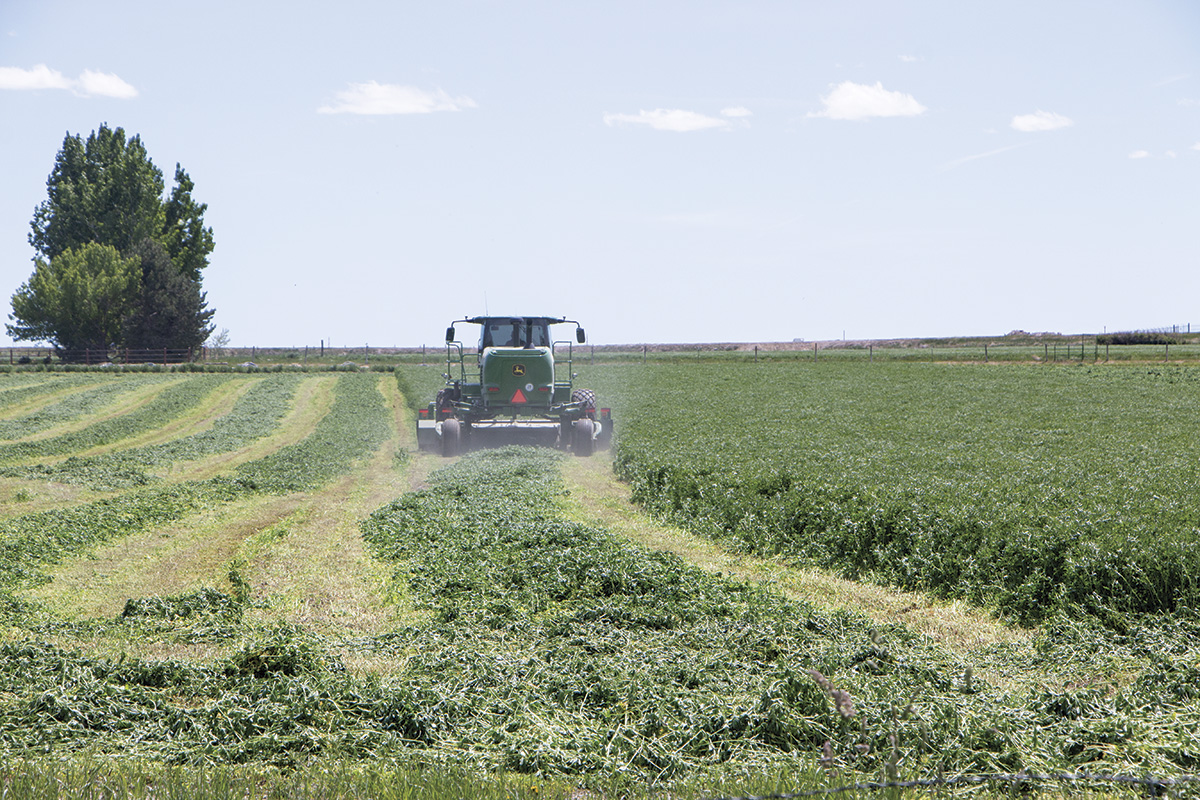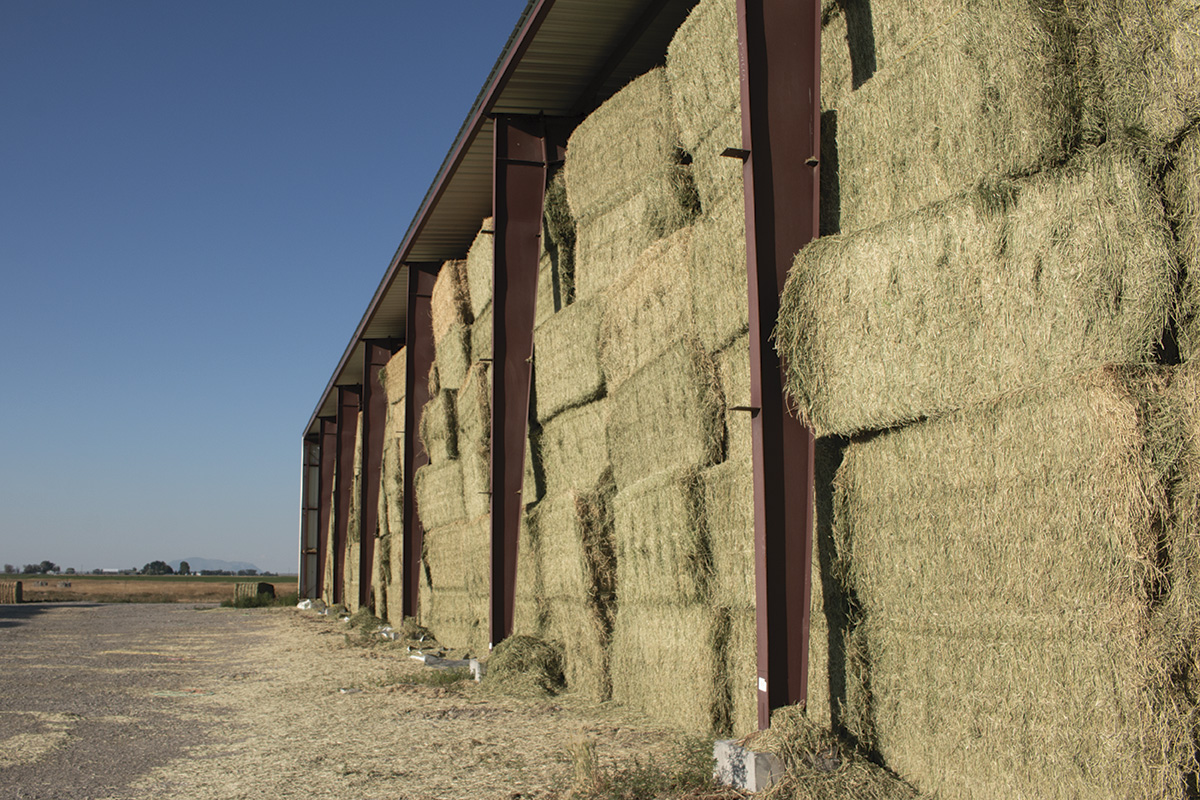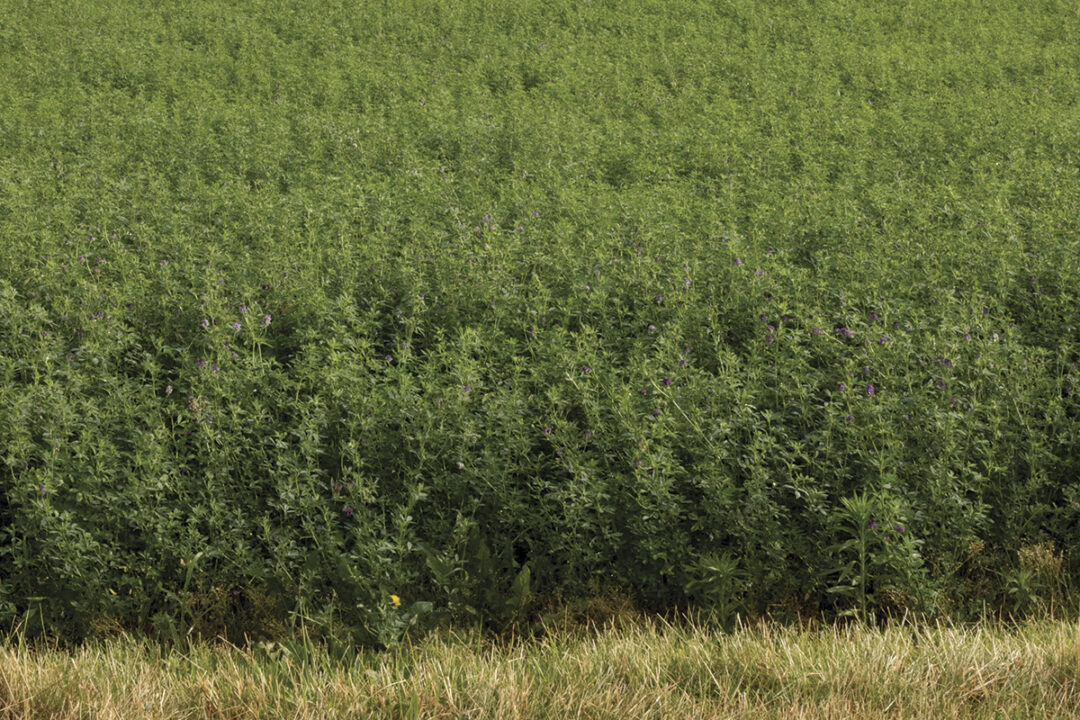To plant or not to plant alfalfa is a question running across the minds of many, especially after reports of a decrease in overall national alfalfa acreage in recent years. With acreage trending down, now is the perfect time to get started in alfalfa and capitalize on the opportunities it offers. From enhancing soil health and providing superior livestock nutrition to ensuring resilience in varying weather conditions, alfalfa is a crop worth adding, or keeping, in your rotation.
Soil health
As a perennial crop, alfalfa shares similarities with cover crops. The soil health benefits of alfalfa build slowly over time. You invest time and energy now and reap benefits for years to come.
Alfalfa's extensive and deep root system creates channels within the soil, improving aeration and water infiltration. The roots can penetrate compacted soils, breaking up hard layers and improving overall soil structure. Enhanced soil structure allows better root development and enables plants to access nutrients and water more effectively. Its deep rooting system also helps reduce soil erosion and facilitates carbon sequestration deep into the ground, contributing to long-term soil health improvement. Established alfalfa stands also provide soil protection and contribute to soil health by acting as a cover crop, reducing the need for tillage passes.
Alfalfa's natural ability to fix nitrogen offers significant advantages as well. Alfalfa has a unique symbiotic relationship with nitrogen-fixing bacteria. These bacteria live in nodules on the roots of alfalfa plants and convert atmospheric nitrogen into a form that can be used by plants. The fixed nitrogen remains in the soil and, if managed effectively, can meet a substantial portion of the nitrogen requirements for subsequent crops. In some cases, alfalfa can even provide nitrogen credits in the second year after stand termination, reducing future nitrogen costs and increasing cost-effectiveness.

Staff photo.
The nutritional advantage of alfalfa
Due to its nutrient profile, alfalfa can serve as a valuable component in ration balancing for ruminants. It complements other forages or feed ingredients with lower-protein contents, providing a source of high-quality protein and essential nutrients to achieve a well-rounded diet.
Alfalfa boasts relatively low neutral detergent fiber (NDF) content, allowing for greater intake of the entire diet. Its reduced fill in the rumen creates more space for increased intake, enhancing overall nutritional efficiency.
With a higher cation exchange capacity compared to most forages, alfalfa helps maintain a higher metabolic pH in animals. This factor supports the potential for improved milkfat production, ensuring optimal herd performance.
Alfalfa also surpasses corn silage in stimulating cud chewing, optimizing milkfat production and promoting healthy rumen function.
Moreover, alfalfa outperforms corn silage in protein delivery. Alfalfa is known for its relatively high protein content compared to other forage crops. It typically contains around 15%-20% crude protein, making it an excellent source of dietary protein for ruminants. It contains higher levels of the essential amino acid lysine, complementing high-corn-based diets and providing a well-rounded nutritional profile.

Staff photo.
Ensuring resilience
Maintaining a certain percentage of alfalfa acres provides farmers with added resilience and risk mitigation. In regions prone to hailstorms, alfalfa serves as a form of insurance. Unlike corn, which can be ruined for the season by hail damage, alfalfa regrows within a short period, typically within 28 days. Additionally, during dry periods, alfalfa can go into summer dormancy and rebound once moisture becomes available, making it a highly adaptable and resilient crop.
Alfalfa offers a consistent and profitable revenue stream throughout the summer with multiple cuttings. Harvesting and selling the crop during a time when other crops may not be as lucrative ensures a steady cash flow, aiding in financial stability and long-term profitability.
Alfalfa enjoys strong demand in the market, resulting in favorable prices. By managing their alfalfa acres wisely, growers can tap into this high-demand market, capitalizing on the profitability potential. For example, the average price of alfalfa right now is around $250 per ton with an average yield of 6 tons per acre, despite dry conditions this year. That generates $1,500 in revenue per acre with virtually no nitrogen expense and minimal other inputs needed. The profit margin for alfalfa is significant compared to other major crops and certainly cannot be overlooked.
Whether it is your first time planting alfalfa or you’re expanding existing acreage, now is the time to embrace the power and flexibility of alfalfa in your operation. From improving soil health to providing superior nutrition and ensuring financial stability, alfalfa unlocks a world of opportunities for long-term profitability.
Consult your local alfalfa expert to develop a strategic plan and harness the full potential of this remarkable crop in your farming operations.









